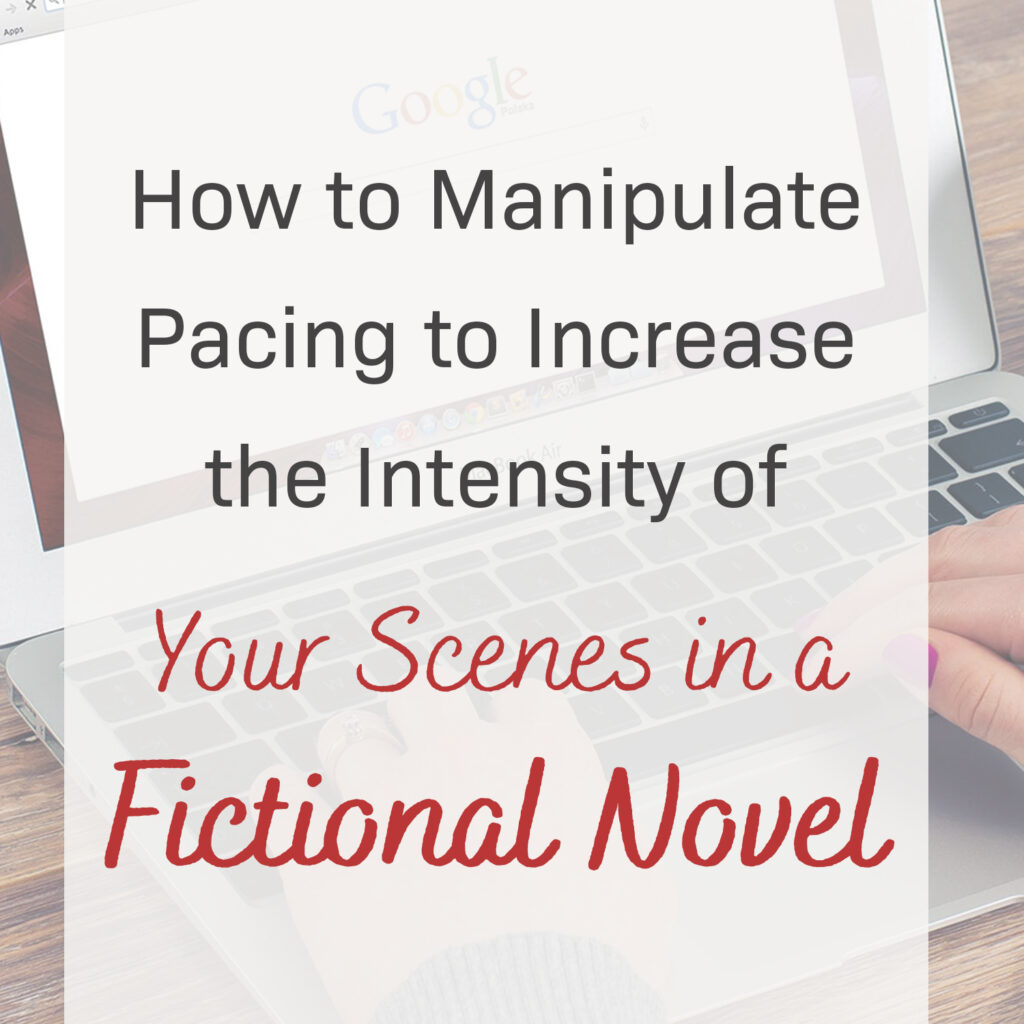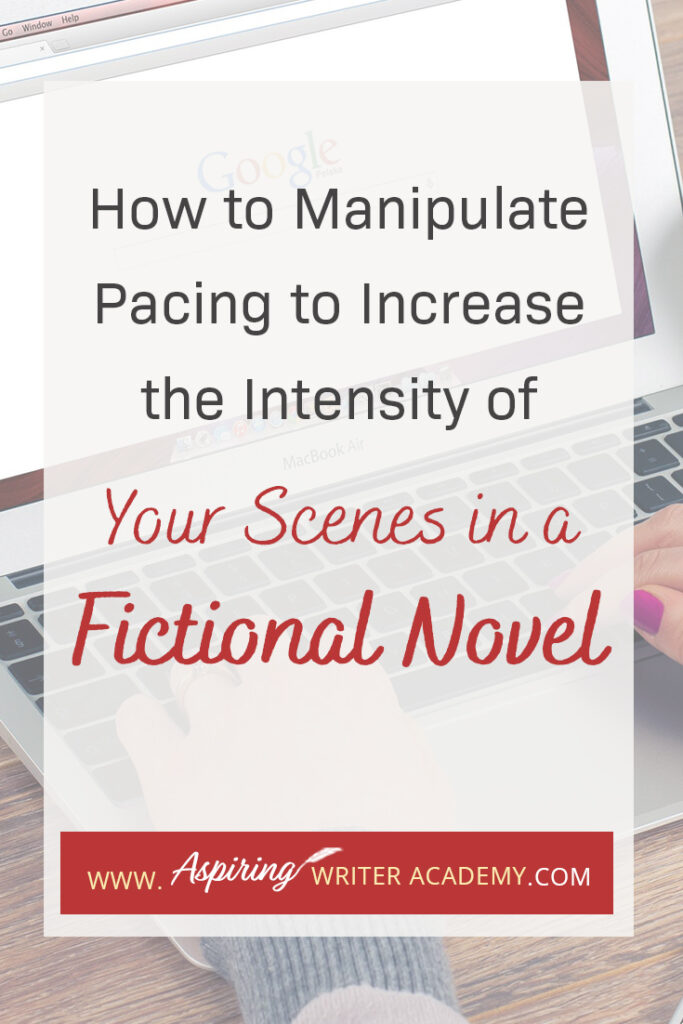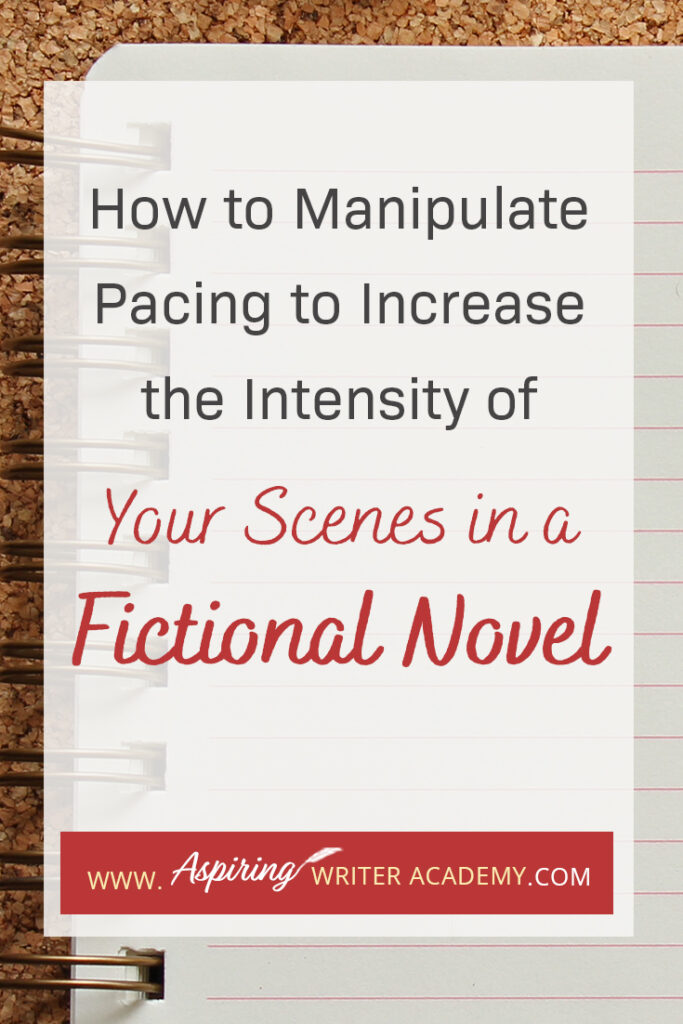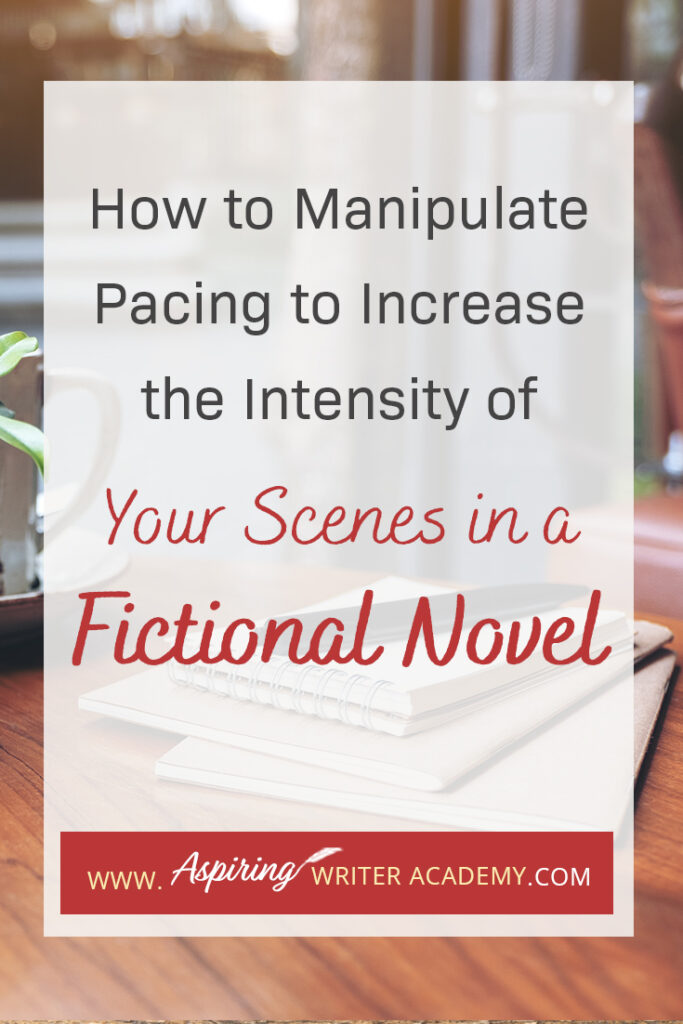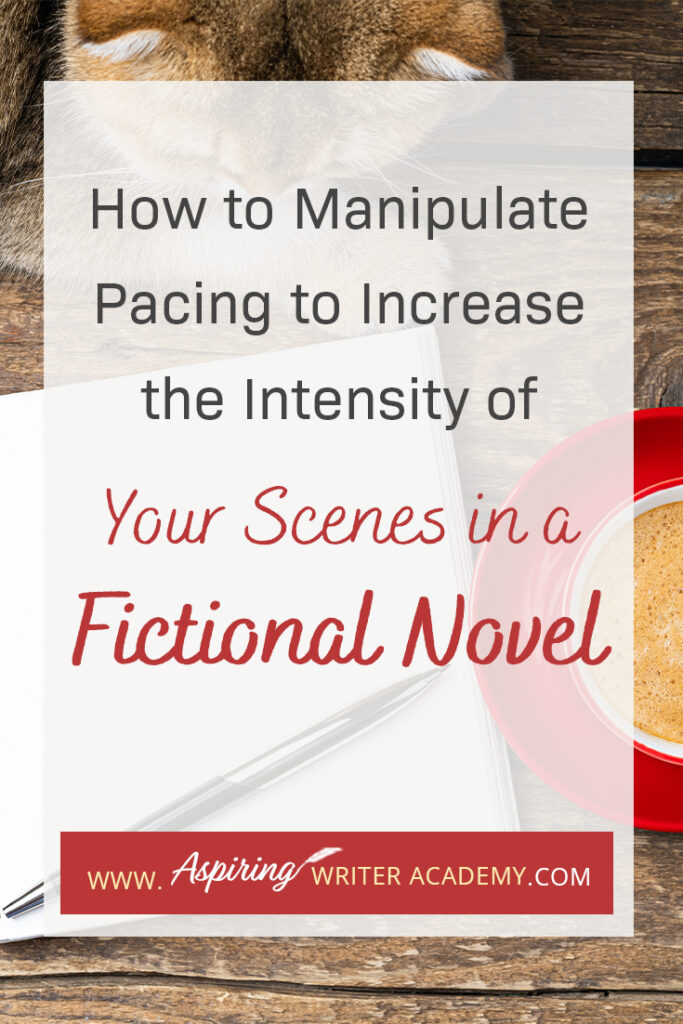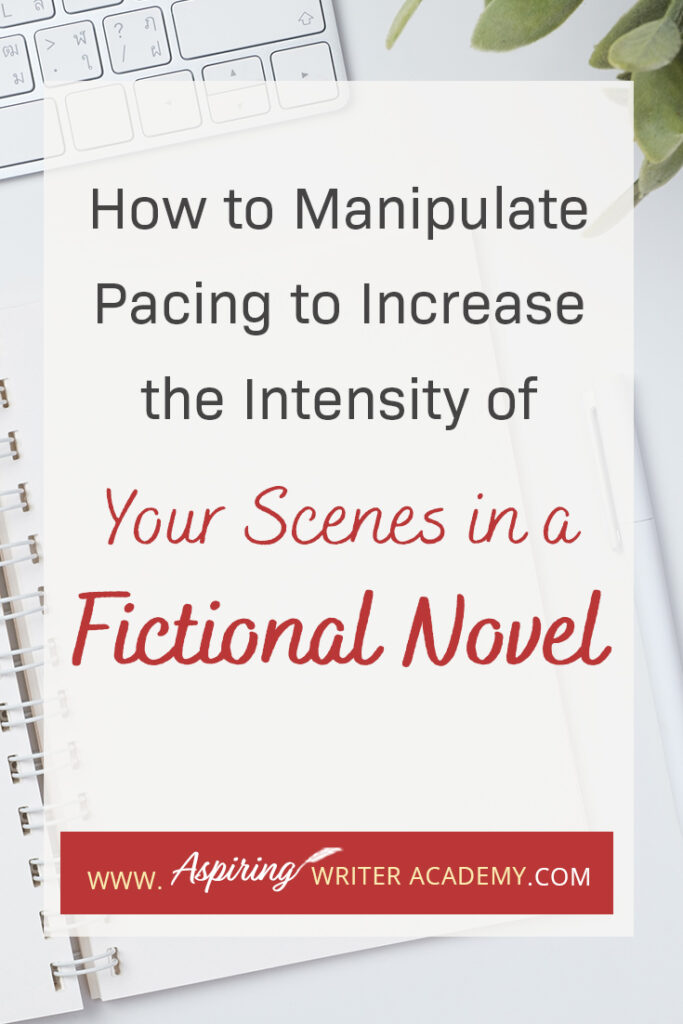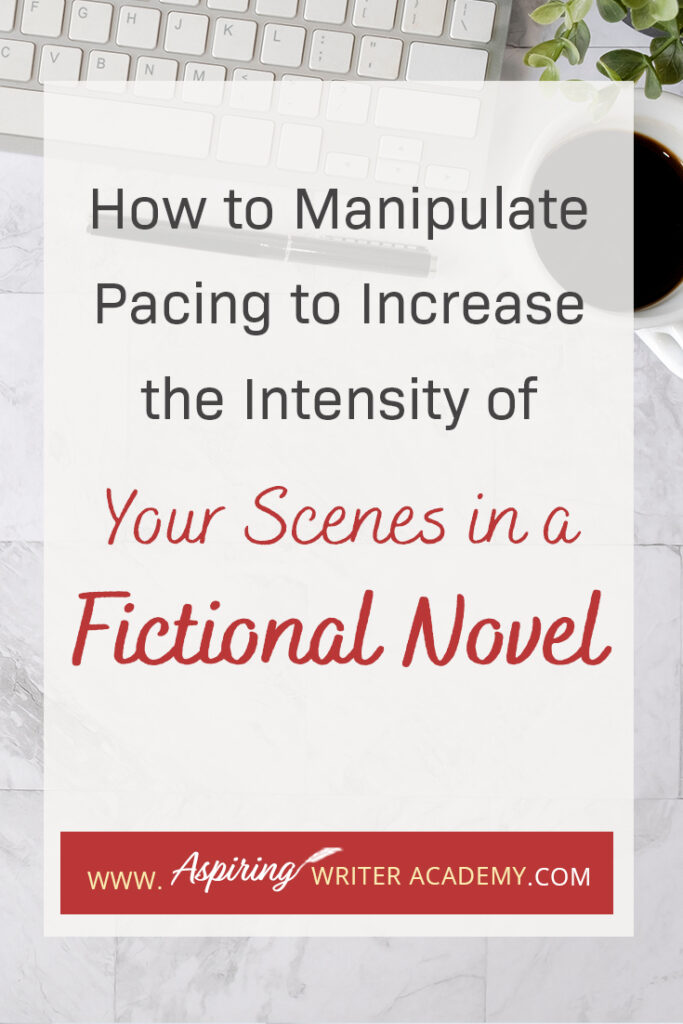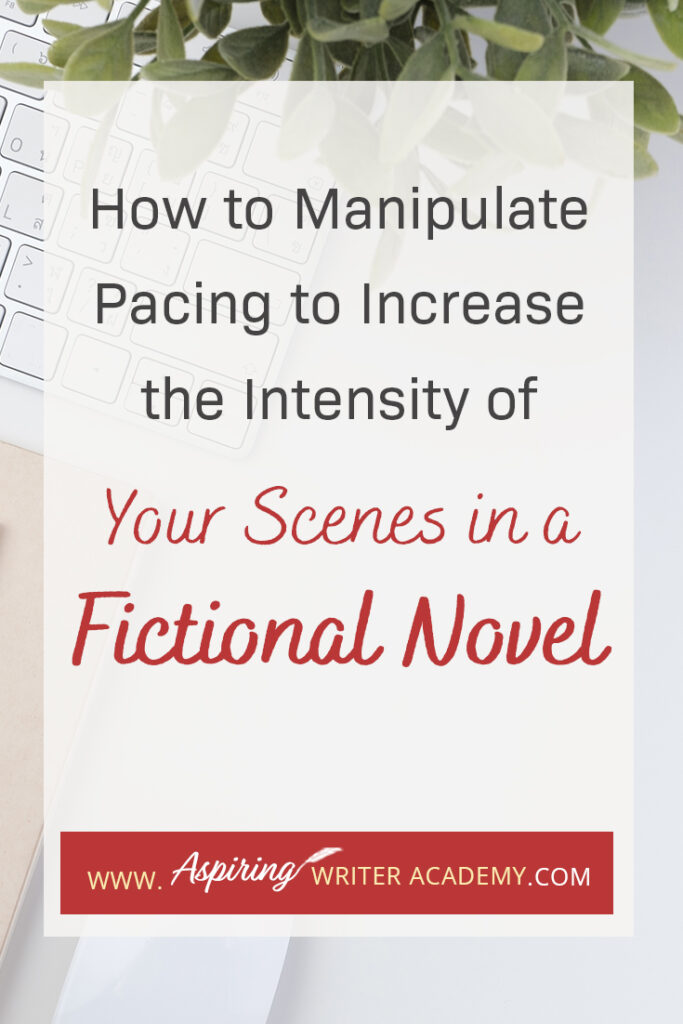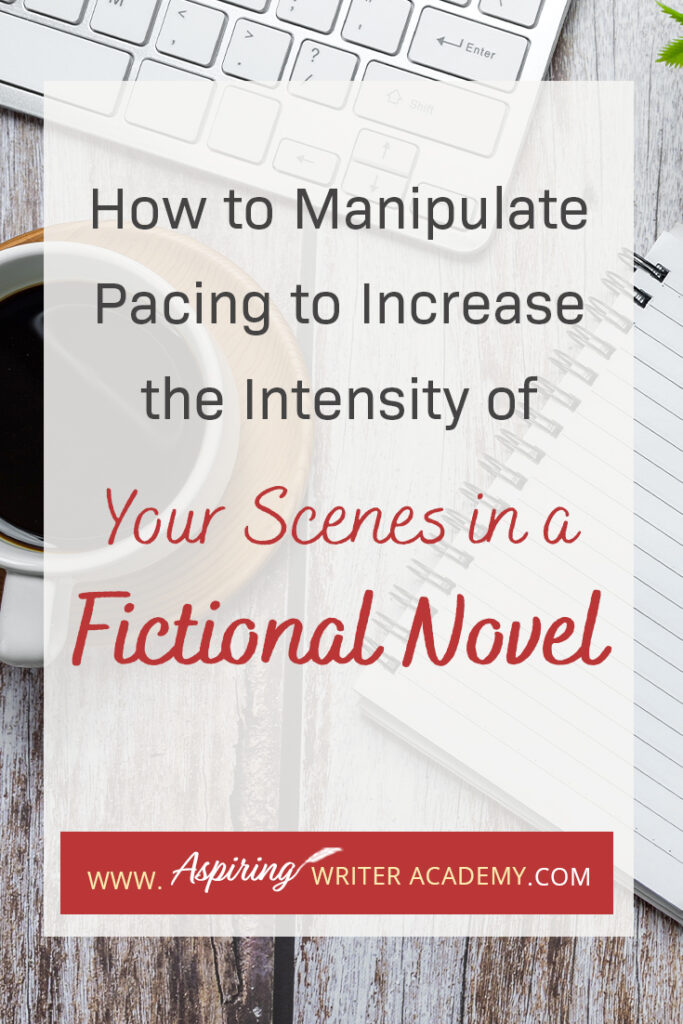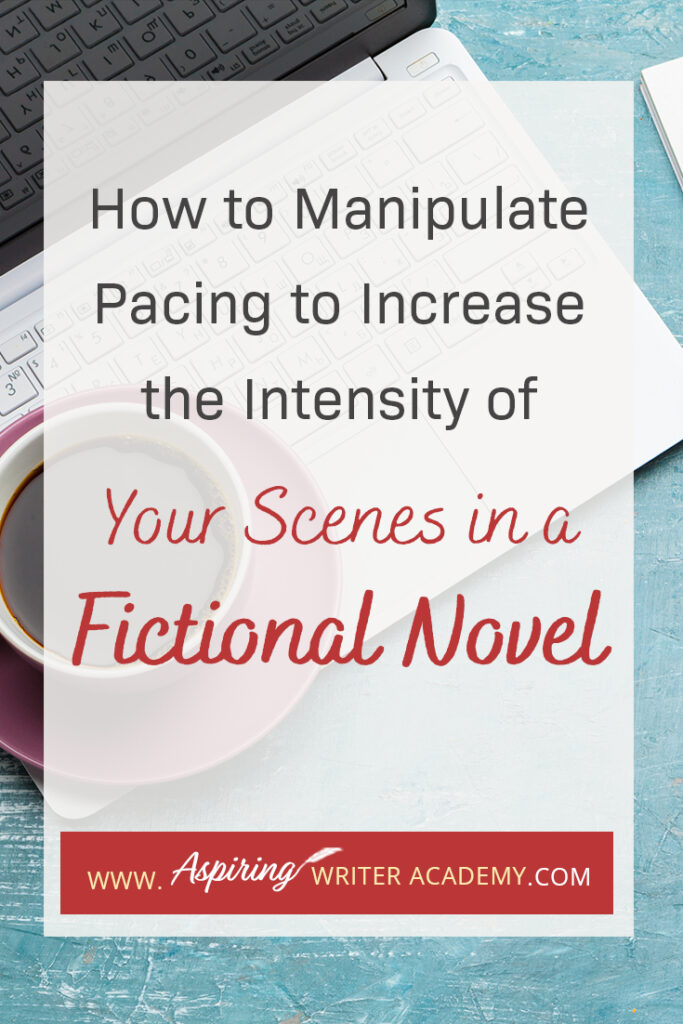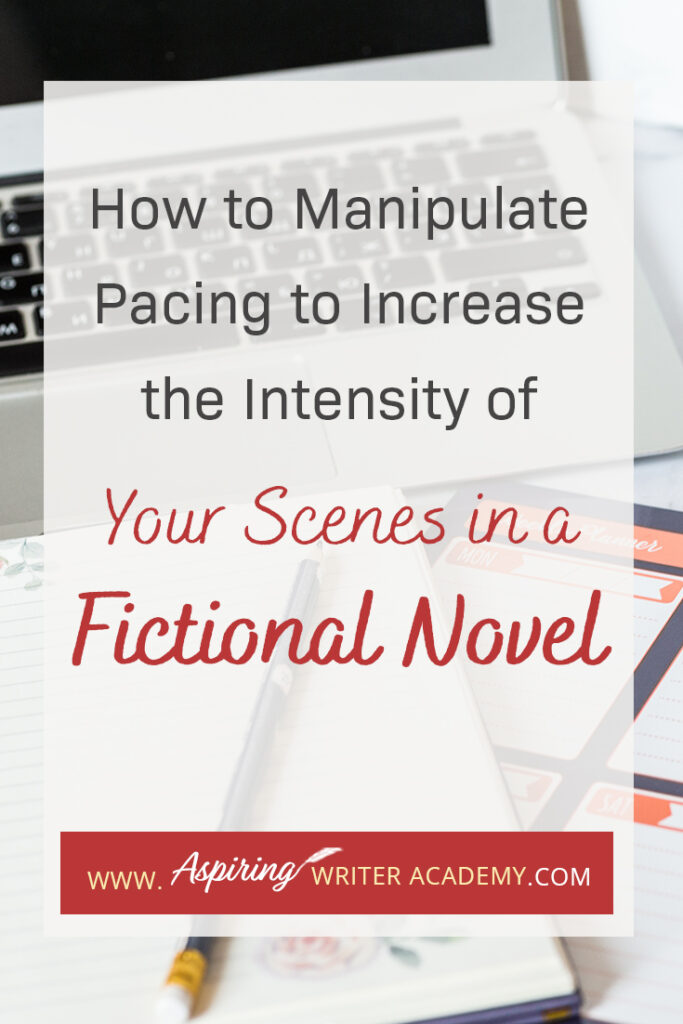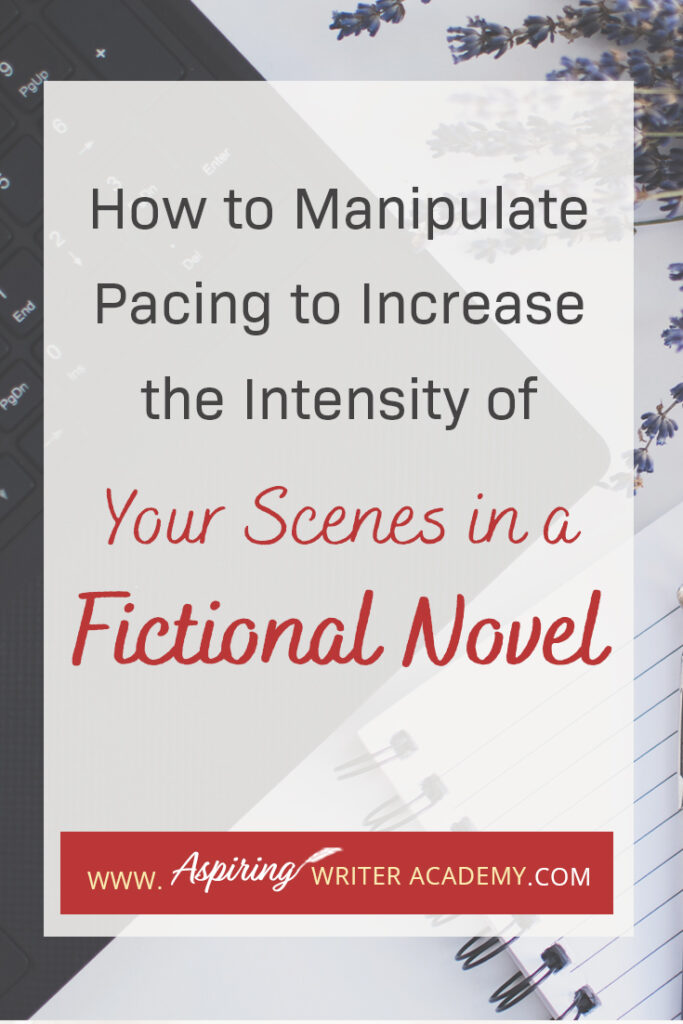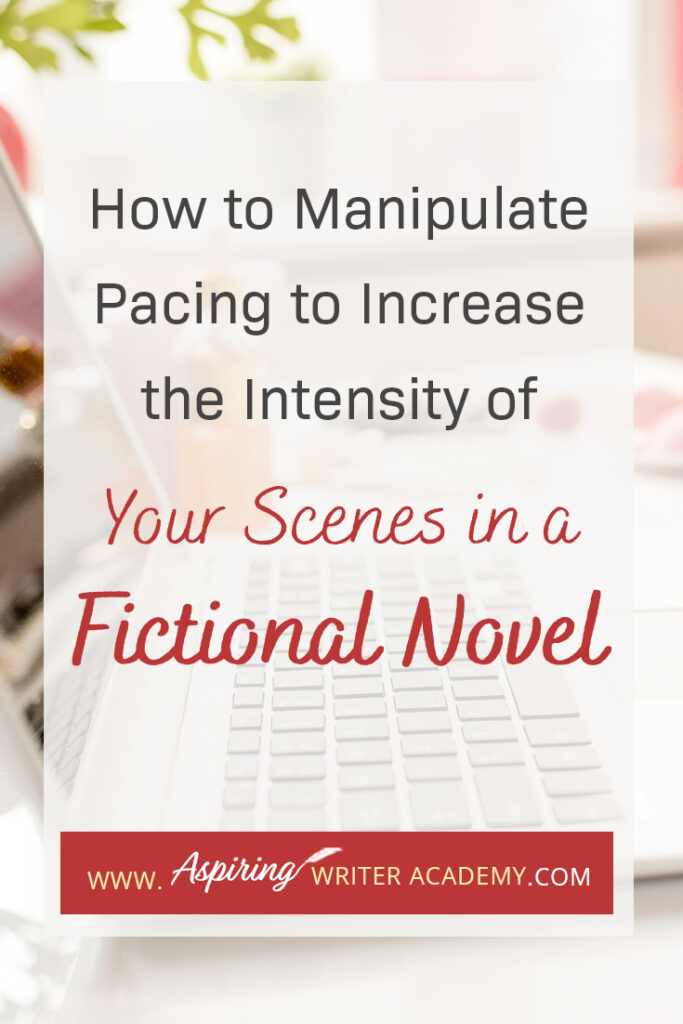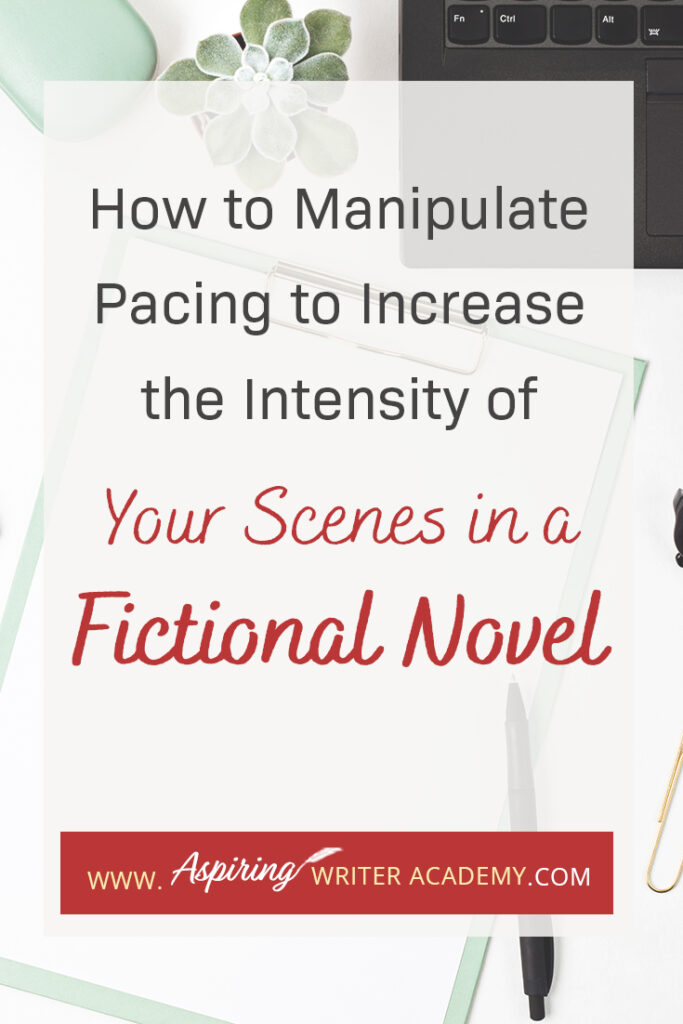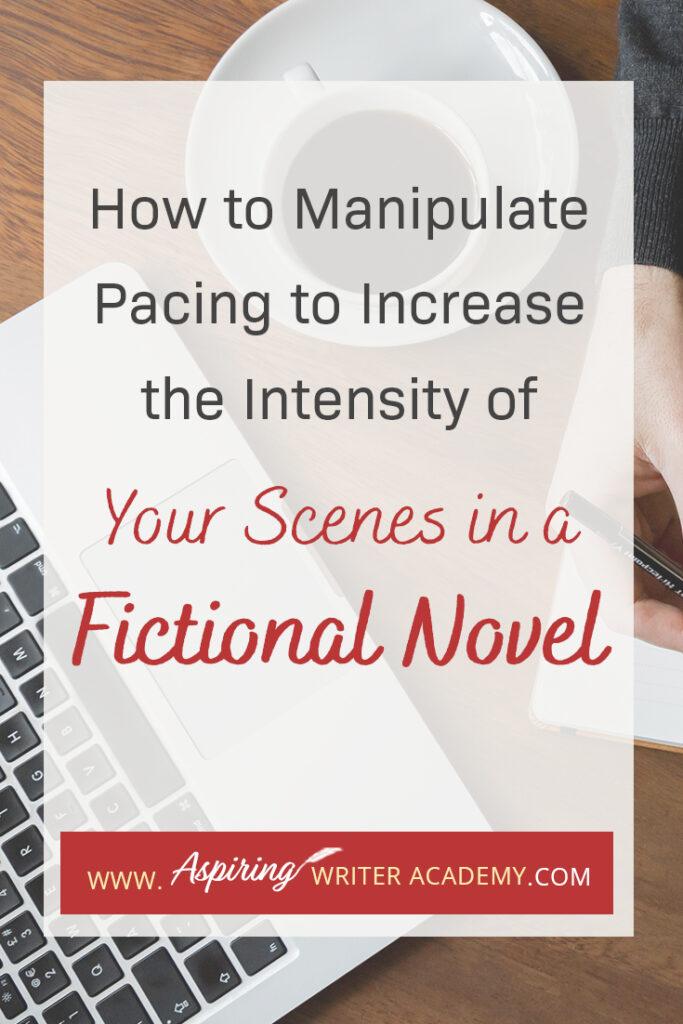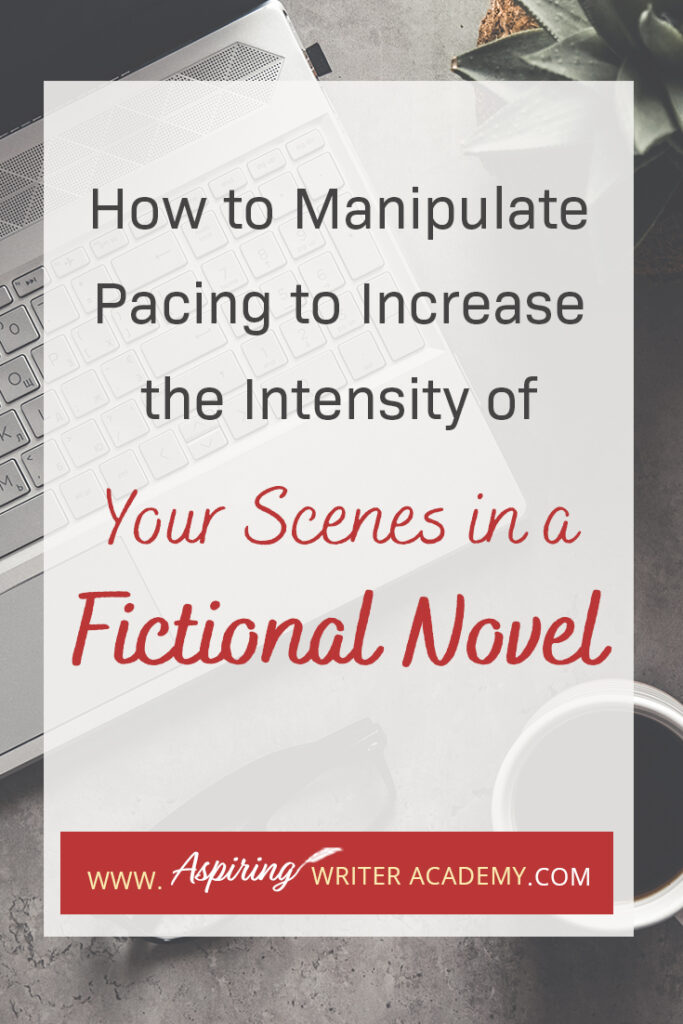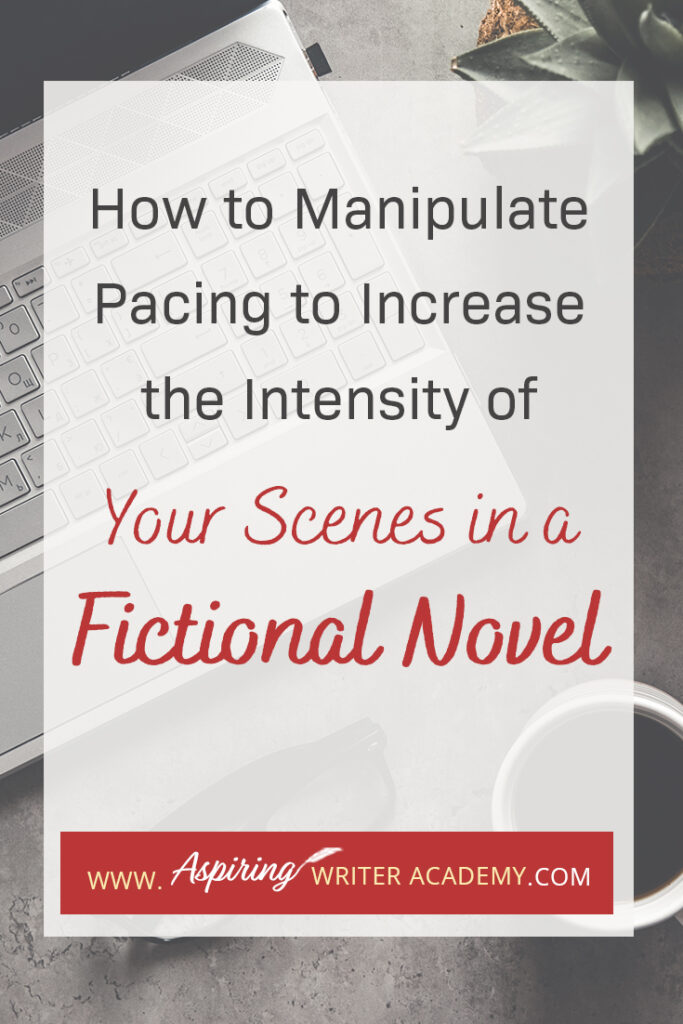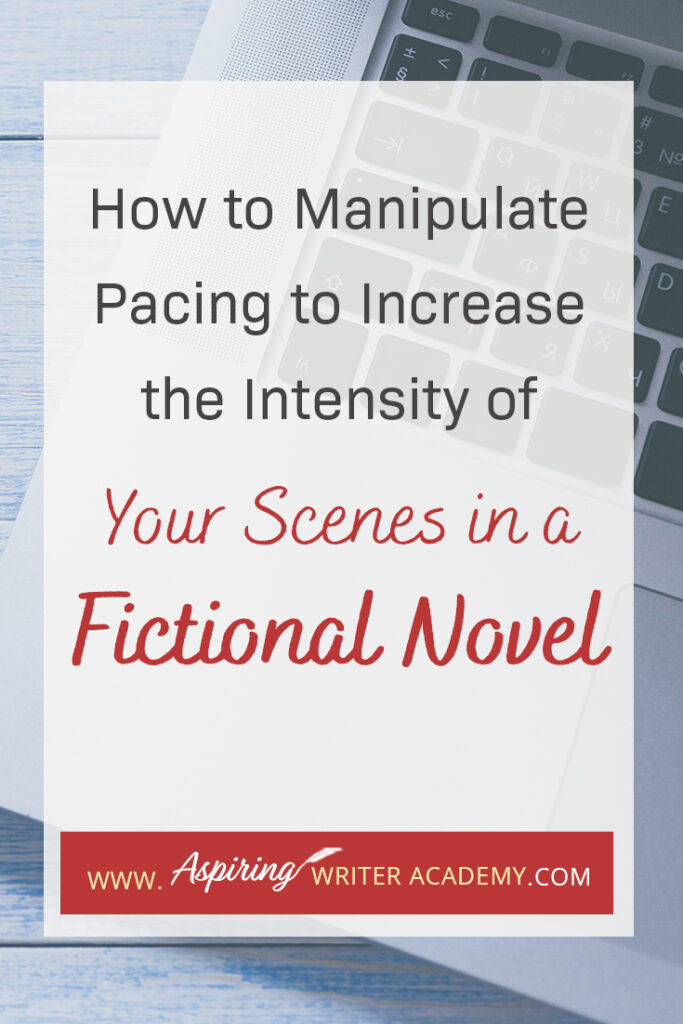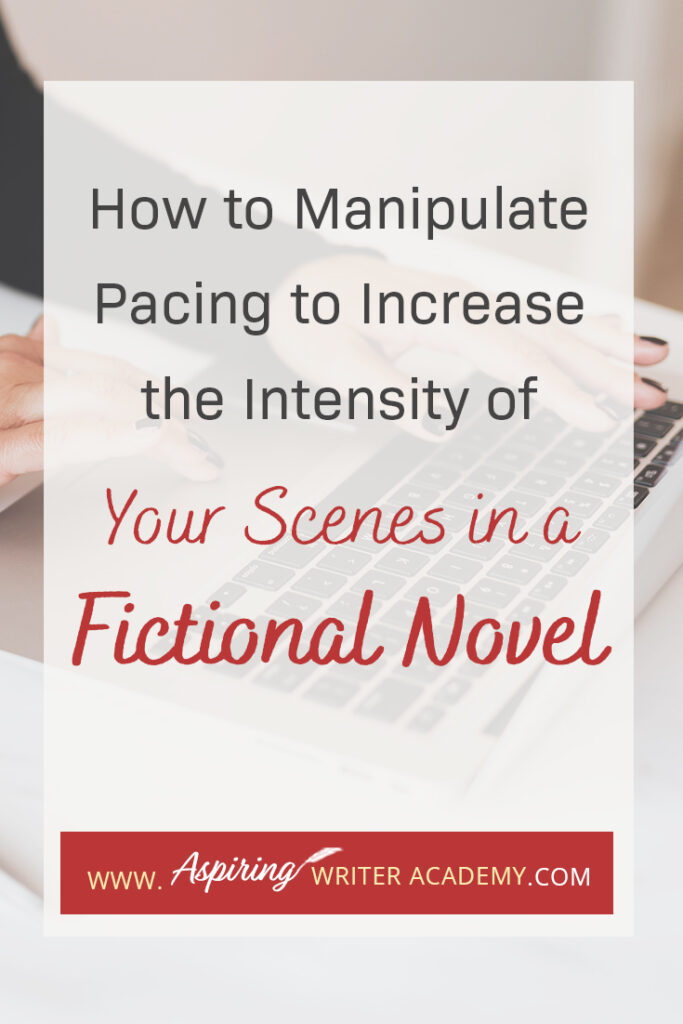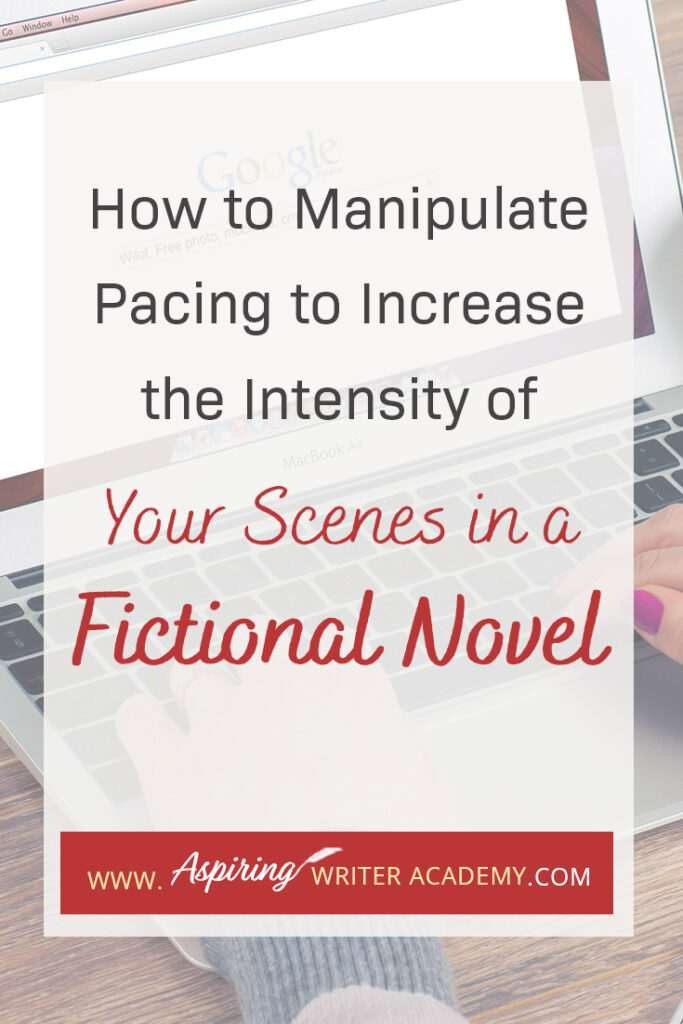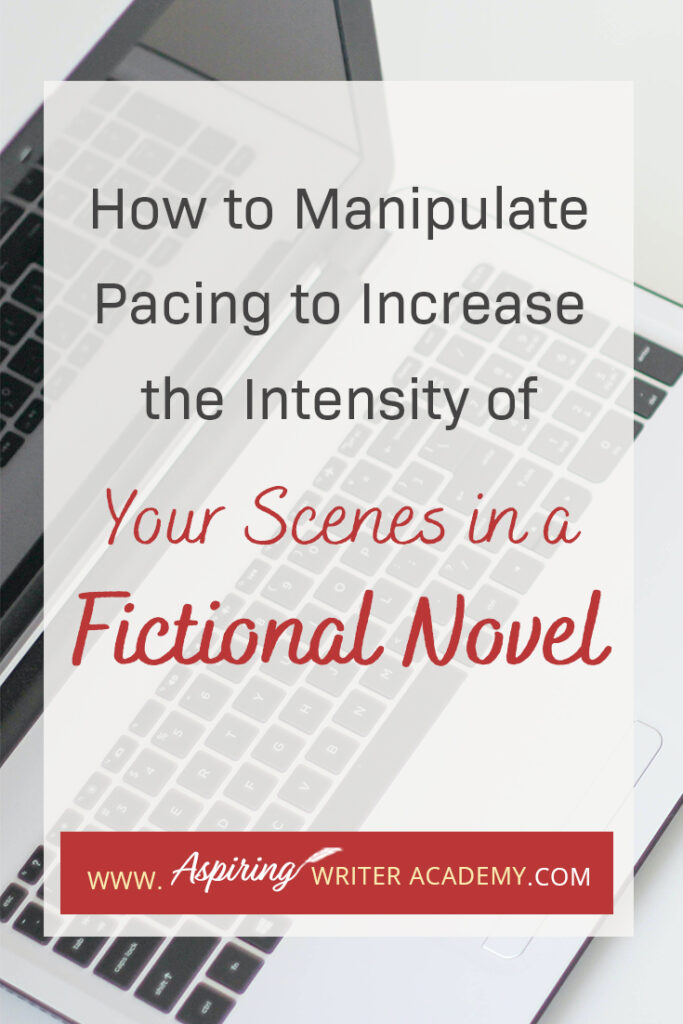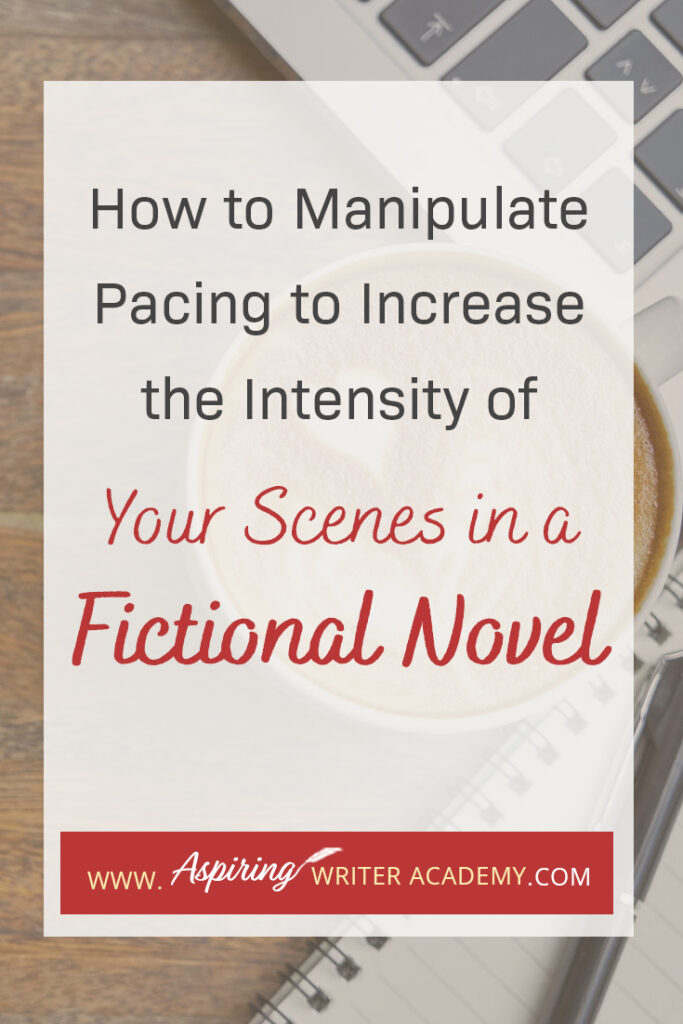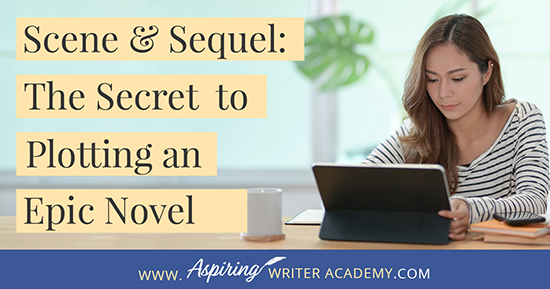How to Manipulate Pacing to Increase the Intensity of Your Scenes in a Fictional Novel
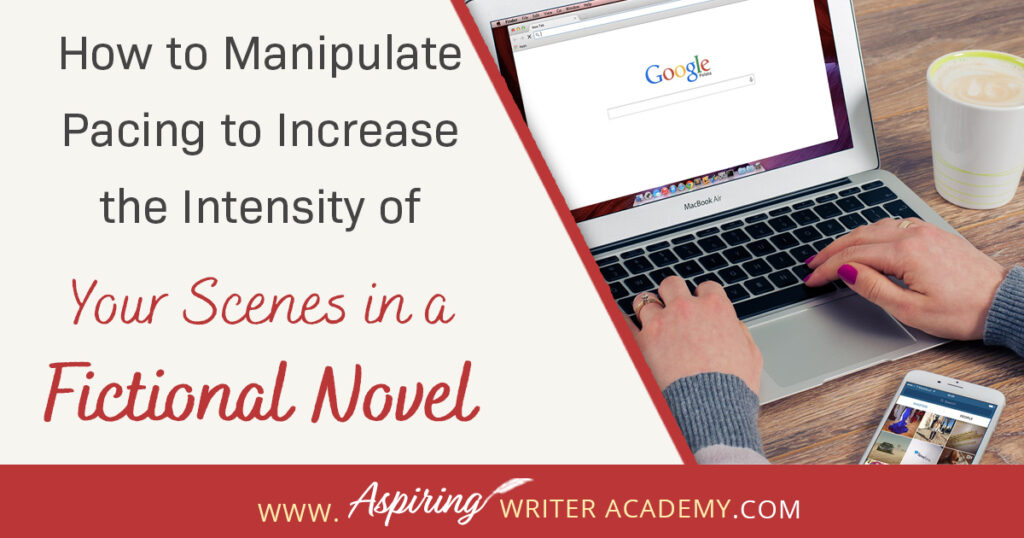
Are there sections in your story that are moving too slow? Do you feel like your scenes are not climatic enough? With the right techniques, you can use pacing to slow a story down or to speed a story up, depending on what is required for each scene. What you do not want, is to have the wrong pacing at the wrong time.
Follow along as we show you How to Manipulate Pacing to Increase the Intensity of Your Scenes in a Fictional Novel to help you write a novel that your reader can not put down.
The Role of Pacing
If you have never considered the role of pacing in a story before, our first tip is to read several books for the sole purpose of studying how the author controls the pacing of the story as a whole and the pacing of each individual scene.
When does the story slow down?
At which points does the progression of the story speed up?
Have you ever read a book that held your interest right up until the ending climax but then you were disappointed because…you expected more. The ending wasn’t exciting enough or unfolded all too quickly. And you were left thinking…was that it?
It could be that the author did not plot the book very well, or it could be that the pacing at the end was so fast that it did not allow the reader to fully appreciate the action at hand, the detailing of the event, and the meaning behind what was really going on.
Or you might have the opposite reaction while reading a book. The pacing, the unfolding of events, is so inconsequential and slow that it doesn’t seem like anything is happening at all. In fact, (yawn), the reader may find themselves falling asleep.
And if the pacing of your book is so slow that the reader puts your book down, there is a very good chance that reader will never pick it up again or finish the story. They might say they will get around to it another day, but that day will most likely never come.
Do not let that happen to you!
When to purposefully slow down the pacing of the story:
- After a sequence of fast-paced action scenes to give the character’s time for reflection and allow the reader to ‘catch their breath.’
- When they are on the cusp of having to make an important decision that affects their lives or the lives of others. The character must stop for a moment and seriously weigh the consequences on each side of the choice they must make.
- During highly emotional moments to allow the character to fully absorb what is happening to them, and why, and how they feel about it.
Usually, these dramatic moments occur after the major plot points (or turning points) in the story. (Right after the Inciting Incident, the Midpoint Reversal, and the Black Moment. Pinch Points #1 & #2 can also be a time to slow down for a moment of poignancy.)
Slowing down a bit in these places can make the story more meaningful as long as you still take care to get to the point and do not let it drag on too long.
- How long is too long? That is something you must intuitively feel. This is another reason you should read several high-quality stories to see how the author handled the pacing.
The slight pause in your story, the consideration of consequences, or the emotional moments, should deliver needed information, use the 5 senses as much as possible, show the reader the direct thought patterns of your character and the physical responses they are feeling and then get out. Do not rehash previous thoughts or emotions from other scenes, do not languish for an over-extensive amount of time or get too dramatic.
The reader will relish these moments in your story but then they will want you to get on with it. Keep the story moving forward. Every time you slow down you have the potential to lose the reader. It is critical to pack even the slower scenes with as much tension as you can by raising the stakes, the consequences of the choices your character must make, the urgency of what your character may need to do next.
When to speed up the pacing of the story:
More often, you will want to ‘cut the fat’ off your scenes and increase the tension to move the story forward. Especially during:
- High action scenes, especially fight scenes or chase scenes. The action is happening moment by moment and there is no time for full, complete sentences here.
- Many writers get stuck at the midpoint of their novels, not knowing what should come next. This may result in a ‘saggy middle’ where the story drops off and there doesn’t seem to be anything happening.
To avoid this problem, pick up the pace right before midpoint with a mini scene-sequence with its own beginning-middle-and end. A mini story within the story. This will slingshot you right over the midpoint and bring you back down on the other side into the second half of Act II.
The mini scene-sequence can be an event that takes your characters away to a new location for just a bit, or a mini problem they must figure out and solve, but it must pertain to the main plot line and turn the story around in a whole new direction. In other words, the mini scene-sequence must be consequential.
Example: In my novel, Bet You’ll Marry Me, the heroine leads a group on a weekend pack trip with horses up to a local fire tower where they camp overnight before returning the next day. But the relationships between the characters are not the same as when they left. The pack trip changed a few things to move the story forward upon their return.
- The second half of your novel should increase in intensity chapter by chapter leading the reader toward the climax at the end. The climax itself should unfold at a faster pace than the rest of the book.
However, make sure there is enough going on with both the characters and the action to make the climax feel complete. Even at this faster pace, the moment should be complex and not wrapped up too quickly. This face-to face climax between the protagonist and antagonist is what your reader has been waiting for from the beginning. Make it count.
How to manipulate the pacing to speed up a story:
1) Start in the middle of the action.
Get into the scene late and get out early. Set up the scene but do not languish on the setting details or character descriptions. Get right to the point of the scene or the conflict. Perhaps even start in the middle of an argument where the characters have already arrived. Then leave the reader on a cliffhanger of sorts. You don’t have to finish the scene by drawing out or wrapping up every last detail.
2) Use shorter sentences.
Your writing style needs to match the pacing of the action in the scene. If you have a couple of fast-paced actions then you need a couple of short, fast-paced sentences.
You might even have a few one-word exchanges back and forth between your characters.
3) Use shorter paragraphs.
Keep an eye on the amount of white space on the page. The more the better during a faster segment. Large blocks of text tire the reader’s eyes. Drop down certain thoughts, phrases, or lines of dialogue into their own line for stylistic emphasis, or to make it stand out. The faster the pace of the action in the story, the shorter your paragraphing. Don’t be afraid to indent and start a new line. Even if that line is only a word or two.
4) Add a ticking clock.
Insert a countdown or deadline by which time something must be accomplished (or the characters will face dire consequences.) Or move up a previous deadline. If your characters only had three weeks to do something, give them news that the deadline has been moved up and now they must do it in two. A ticking clock always ramps up the intensity of a story and makes the reader worry if the character will make the deadline or not.
5) Switch scenes or POV (Point of View)
You can cut from one scene to another scene or another character’s POV, increasing the tension as the reader wonders what will happen next when they return to the storyline of the other scene. However, be careful not to cut back and forth too much or you might give the reader whiplash and the story may become too confusing.
6) Keep exposition brief and to the point.
If you are trying to write faster, tighter scenes to ramp up the tension in your story, this is not the time to write long, descriptive details on the setting, or give the reader back story, or hang out in the character’s thoughts. Set the scene, give the reader only the details they need to know to understand the action or scene at hand, and let everything else be shown in action and dialogue. Show—don’t tell. You can slow down to incorporate other details after the action scene is over.
- Use Cliffhangers.
Break off the scene on a moment of high stakes, high tension, and it will keep the reader on the edge of their seat to see what happens next. To use cliffhangers effectively, it is important to know the components of Scene & Sequel.
Three places you can stop to insert a cliffhanger and create tension are:
- After the scene disaster at the very end of a scene. The character did not achieve his scene goal and with new information delivered to him or action taken against him, the character now finds himself in a worse position than before. Stop the scene right after the blow is delivered, before the character can react. The disaster is highly consequential, and the reader does not know what the character will do next or what will happen to him.
Or
- After the thought process and quandary considerations in the middle of a reflective sequel. After the scene disaster the character reacts and considers what to do. He can either do this or that. Neither option is good, and this is what causes the suspense. Stop here with the character wondering what to do and the reader will worry along with him, wondering which path the character will choose. Cut to another scene and come back to the character’s decision at the top of their next scene.
Or
- At the end of a sequel after the character has considered his two consequential choices, he makes a decision. If neither choice is good, his decision will be a cliffhanger because now the reader knows what this character must do next and will sit up and say oooooh!
The decision becomes the character’s next scene goal and the reader knows it will be challenging, cause a great deal of anxiety, and perhaps be dangerous for him or others. Cut to another scene or another character’s POV right after this decision is made and the reader will have to wait to see what happens when the storyline picks back up with this character.
For every Scene-Sequel segment, the author must decide which would be the best place to insert a cliffhanger: After the disaster, After the quandary, or after the decision. It can either be a big cliffhanger or a subtle mini cliffhanger.
But to write a book the reader can not put down you should do this in almost every single scene-sequel segment all the way through the book. You need to keep planting those questions of will happen next in the reader’s mind. You need to keep them worrying about your character.
Even the quietest dramatic stories with seemingly low-key action should have these cliffhangers inserted at every turn. It can be a whispered line of dialogue or the discovery of new information or even a gentle touch of the hand that triggers a consequential disaster for your character.
The key is for such things to cause a great deal of anxiety or tension for the character. Make it matter. Make it raise the stakes. Each scene should serve to incrementally change the character and the main storyline.
If you would like to learn more about Scene & Sequel, you can learn how to craft each component in our post: Scene & Sequel: The Secret to Plotting an Epic Novel
We hope you have enjoyed reading How to Manipulate Pacing to Increase the Intensity of Your Scenes in a Fictional Novel, and that you have learned some valuable tips to balance your scenes and ramp up the suspense in your fictional story.
If you have any questions or would like to leave a comment below, we would love to hear from you!
If you like more help developing your story, you may wish to download our Free Brainstorming Your Story Idea Worksheet
Do you find it difficult to create compelling antagonists and villains for your stories? Do your villains feel cartoonish and unbelievable? Do they lack motivation or a specific game plan? Discover the secrets to crafting villains that will stick with your readers long after they finish your story, with our How to Create Antagonists & Villains Workbook.
This 32-page instructional workbook is packed with valuable fill-in-the-blank templates and practical advice to help you create memorable and effective antagonists and villains. Whether you're a seasoned writer or just starting out, this workbook will take your writing to the next level.
Our Goal for Aspiring Writer Academy is to help people learn how to write quality fiction, teach them to publish and promote their work, and to give them the necessary tools to pursue a writing career.

ENTER YOUR EMAIL BELOW
TO GET YOUR FREE
"Brainstorming Your Story Idea Worksheet"
7 easy fill-in-the-blank pages,
+ 2 bonus pages filled with additional story examples.
A valuable tool to develop story plots again and again.
Other Blog Posts You May Like
How to Handle Negative Book Reviews
Learn To Plot Fiction Writing Series: Story Analysis of the Movie “Top Gun: Maverick”
How To Plan an Amazing Children’s Book Launch Party
5 Reasons Your Writing Sucks! (And How to Fix It)
How to Brainstorm a New Novel Using Goal, Motivation, and Conflict
How to Write Query Letters (for Fiction)
Slingshot Week: How to Set New Goals for Writing in 2023
The Pros and Cons of Writing Holiday Fiction (Collections & Anthologies)
Biggest Self-Publishing Mistakes New Authors Make
Novel Writing Tips: Don’t Bury the Dialogue!
What to Include in Your Author Newsletter
Why Authors Need an Email Newsletter
How to Choose Characters to Populate Your Fictional Story
Fiction Writing: Critique Group Etiquette & Warning Signs of a Good Group Gone Bad
Scene & Sequel: The Secret to Plotting an Epic Novel
Scene & Sequel: The Secret to Plotting an Epic Novel (Part 2)

is a multi-published author, speaker, and writing coach. She writes sweet contemporary, inspirational, and historical romance and loves teaching aspiring writers how to write quality fiction. Read her inspiring story of how she published her first book and launched a successful writing career.

